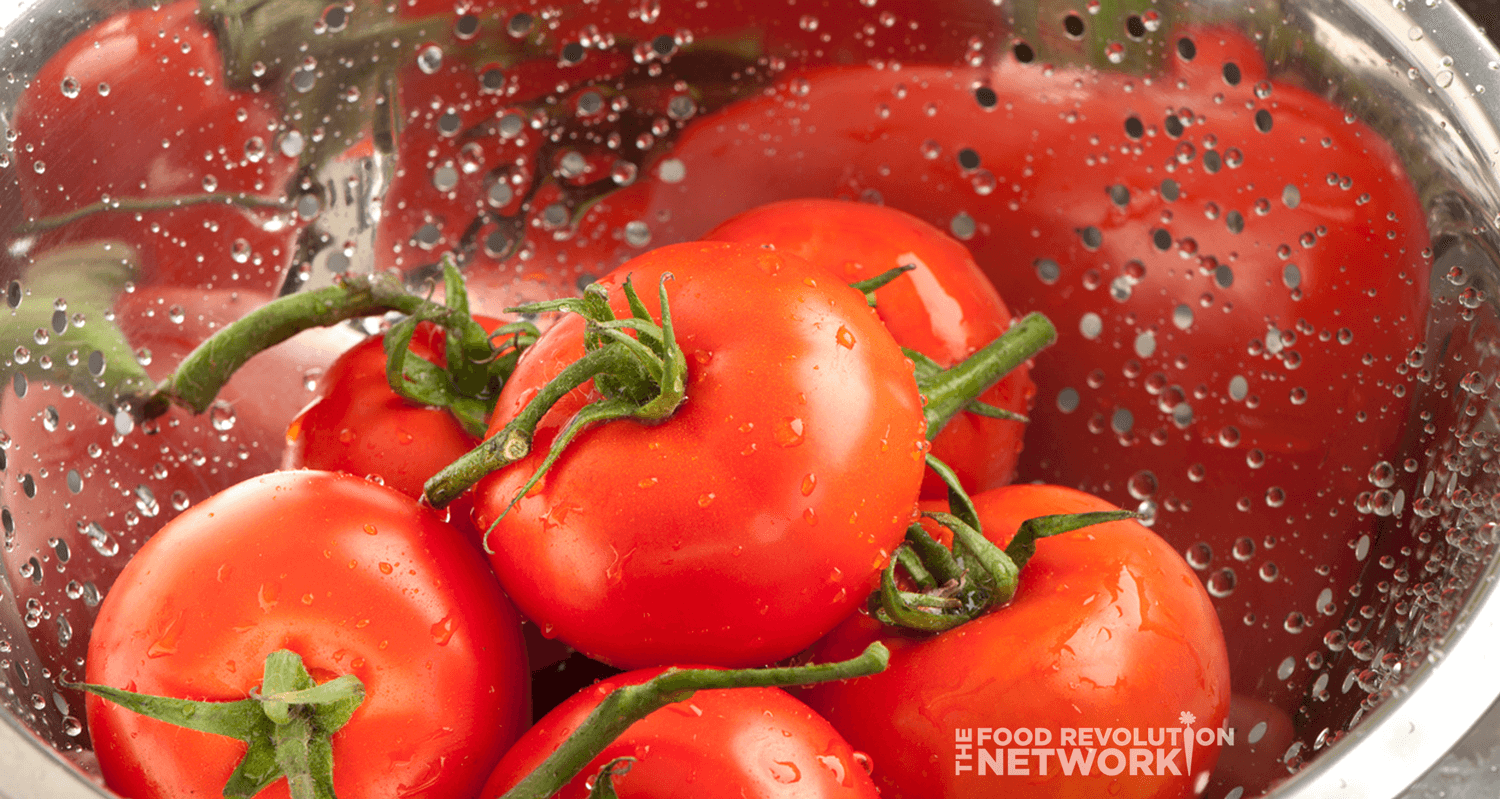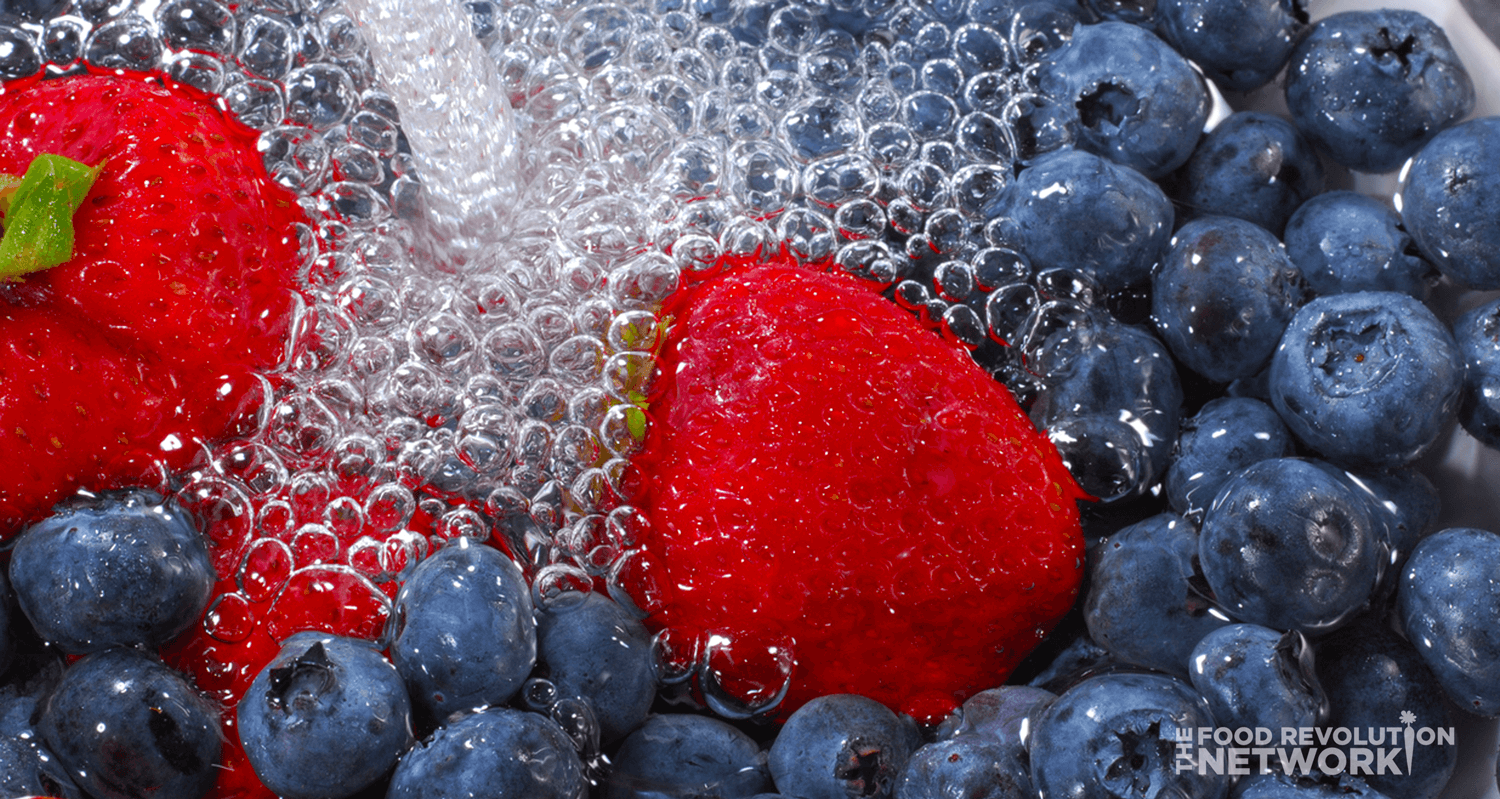Do you usually wash your produce by rinsing it under cold, running water?
Most people do.This method works well to remove some of the pesticide residues from some forms of produce.
Scientists at the Connecticut Agricultural Experiment Station found that washing produce with running water reduced the amount of pesticide residue for 9 of the 12 tested pesticides.
So, running water can work, but what about using products called “produce cleaners?” Should you use them? Research has shown that most commercial produce cleaners are no more effective than plain water.
But several liquids have been shown to be more effective than plain water. Those include salt water, vinegar water, or baking soda water. Keep reading to see how to use them effectively.
Washing Produce with Salt Water and Vinegar
Salt water is one of the easiest and most cost-effective ways to remove certain pesticides.
In a study published in Food Control, researchers washed vegetables for 20 minutes in vinegar, a salt water solution, or plain water to eliminate the residue of four common pesticides – chlorpyrifos, DDT, cypermethrin, and chlorothalonil.
They discovered that a 10% salt water solution was the most effective, and far more so than washing with plain water.
Full-strength vinegar was found to be equally as effective. But using vinegar would get quite expensive and would leave foods with an unwelcome vinegary flavor, making it less than ideal for a daily vegetable wash.
The Best Way to Wash Fruits and Vegetables
What may be the best way to clean fruits and veggies comes from a new study published in the Journal of Agricultural and Food Chemistry. This study compared the effectiveness of plain water, a Clorox bleach solution, and a baking soda and water solution.
Perhaps surprisingly, the baking soda solution was found to be most effective at removing pesticide residues both on the surface and beneath the skin of apples.
The baking soda solution used in the study was very weak — a mix of only one ounce of baking soda mixed with 100 ounces of water. And it took 12 to 15 minutes of soaking to completely remove the pesticides.
What does all this mean for you? How should you use this information to wash your produce?
How to Wash Vegetables

In the studies mentioned above, researchers cleaned produce much longer than most of us would on an ordinary day. But this should not prevent us from putting their methods to use.
Most people would never wash vegetables for longer than a couple of minutes, so we’ve adapted the results of these studies to more practical everyday use.
Admittedly, it won’t be quite as effective as study results, but it should be more effective than plain water.
Here’s a quick and easy way to wash veggies using baking soda:
For leafy greens
- Fill a salad spinner with greens, then fill with water.
- Add a teaspoon of baking soda and mix well.
- Soak your greens for a minute, swish, dump, then rinse, and spin dry.
- If you don’t have a salad spinner, you can add the greens, water, and baking soda to a bowl, let them soak, drain in a strainer, rinse, then pat leaves dry with a clean lint-free kitchen towel or paper towels.
For mushrooms
There is some debate in the culinary world about how to clean mushrooms.
Some chefs prefer to gently wipe mushrooms with a damp towel. However, to clean mushrooms thoroughly, you can gently scrub mushrooms using a mushroom brush and then rinse them quickly under running water. After that, blot the mushrooms dry with a clean kitchen towel or paper towel.
For other veggies
- Fill a large bowl with water.
- Then add a teaspoon of baking soda.
- Add the veggies.
- Soak for a minute or two.
- Scrub with a brush.
- And finally, rinse off the veggies.
How to Wash Fruits

Smooth skinned fruits, such as apples, nectarines, and cherries, can be washed in a baking soda bath the same way as veggies.
Berries can be rinsed under cold water in a mesh strainer, then gently patted dry with a clean kitchen towel or paper towels just before you intend to eat them.
Although your instinct may be to rinse off berries when you bring them home, doing so actually increases moisture and accelerates spoilage, microflora, and mold. Which is why it’s best to rinse them soon before you eat them.
What’s the Takeaway?
Try to choose organic produce as much possible, especially if you are a pregnant woman or when shopping for food for children. This is especially important for the “dirty dozen” listed above.
For practicing good food hygiene, learning how to wash produce is important, whether it’s organic or conventional. When washing your fruits and vegetables, making your own baking soda or salt solution may be the best option.
But this shouldn’t be something that causes you stress. Simply soaking your vegetables for a few minutes or rinsing your produce in running water for at least 30 seconds will help the food you eat and serve be safe.
Eating lots of fresh fruits and vegetables is one of the best things you can do for your health. But take the next step and do the best you can to clean them, knowing you’re doing something very good for yourself and your health.
https://foodrevolution.org/blog/how-to-wash-vegetables-fruits/






Комментариев нет:
Отправить комментарий